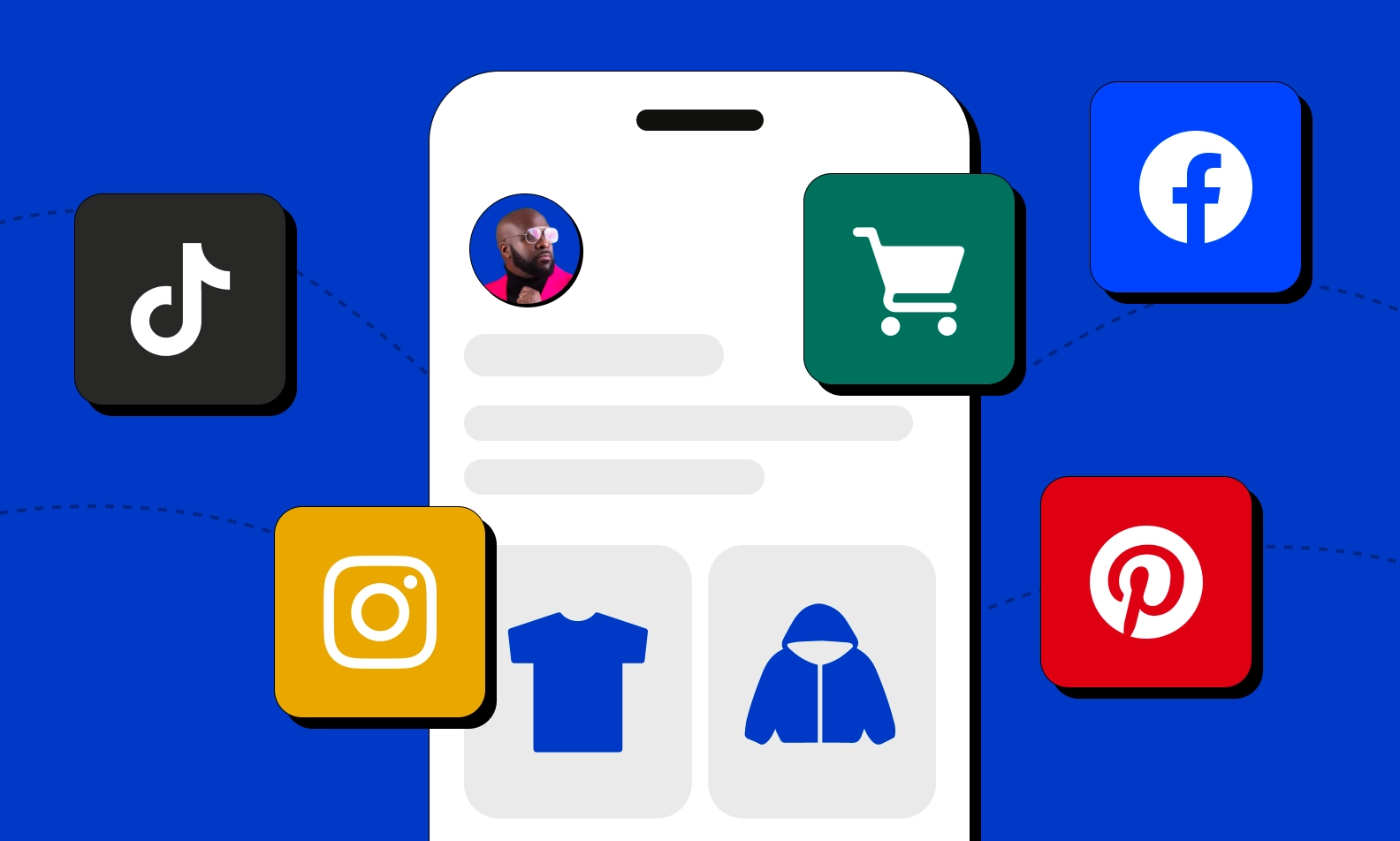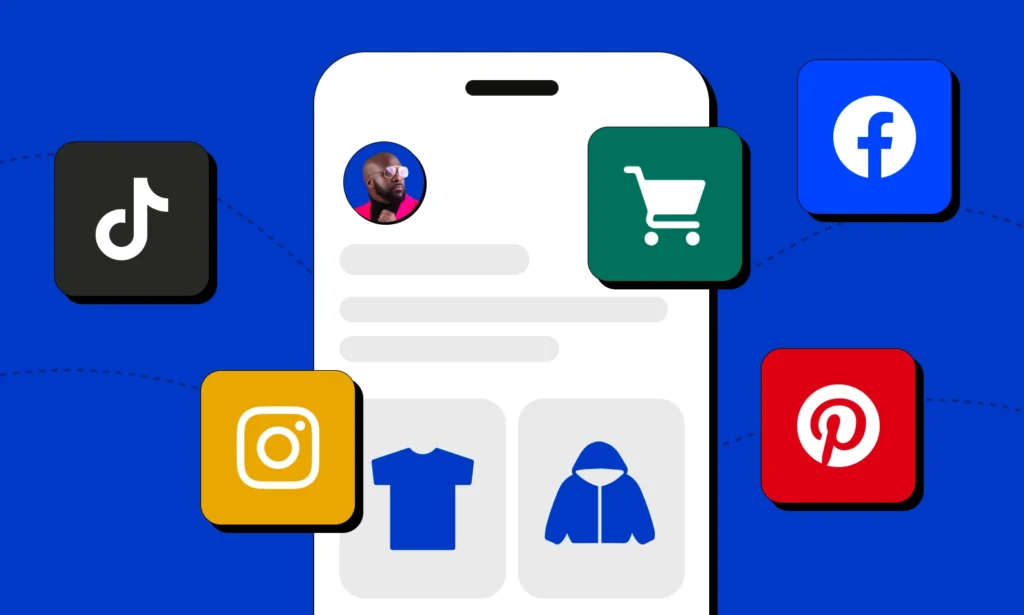

In today’s fast-evolving digital landscape, social commerce and live shopping are revolutionizing how customers discover, interact with, and purchase products. Traditional online stores are no longer enough — customers want immersive, authentic, and real-time experiences. Platforms like Instagram, TikTok, and YouTube have become virtual shopping malls where entertainment, engagement, and commerce blend seamlessly.
As we move into 2025, these two trends — social commerce and live shopping — are not just reshaping marketing strategies but defining the future of customer engagement.
What Is Social Commerce?
Social commerce refers to selling products directly through social media platforms. Instead of redirecting users to an external e-commerce website, brands now enable shoppers to browse, add to cart, and purchase without leaving apps like Instagram, Facebook, or TikTok.
It’s a fusion of social interaction + online shopping, creating a more engaging buying journey.
💡 Example:
A skincare brand showcases a product on Instagram Reels. Viewers can click “Shop Now” within the video and complete the purchase — all inside the app.
This direct, frictionless process boosts conversions and allows businesses to connect emotionally with customers in real time.
What Is Live Shopping?
Live shopping (or live-stream shopping) takes social commerce a step further. It’s like digital window shopping combined with a live event — hosted by influencers, celebrities, or brand representatives.
Viewers can:
- Watch product demonstrations
- Ask real-time questions
- Get exclusive offers
- Purchase instantly from the live stream
💡 Example:
During a TikTok Live event, a fashion influencer tries on different outfits. Viewers can click the on-screen product tag to buy instantly — turning engagement into sales in seconds.
Why Social Commerce & Live Shopping Are Booming
Several key shifts are driving this transformation:
1. Rise of Short-Form Content
Platforms like TikTok, Instagram Reels, and YouTube Shorts have trained audiences to prefer quick, visually engaging content. Live and shoppable videos naturally fit this format, grabbing attention while promoting real products.
2. Trust Through Influencer Marketing
Modern consumers trust people more than brands. Social commerce leverages influencers to humanize shopping experiences. When customers see real people demonstrating products live, authenticity and trust skyrocket — key ingredients for higher conversions.
3. Gen Z & Millennials’ Shopping Behavior
These generations are mobile-first and highly influenced by social trends. Over 50% of Gen Z shoppers say they discover products through social media first, not search engines. This makes social platforms the new storefronts.
4. Interactive Shopping Experience
Unlike traditional e-commerce, social commerce creates a two-way interaction. Customers can comment, ask questions, and get responses instantly — making the buying journey feel more personal and connected.
Benefits for Brands and Businesses
🔹 1. Enhanced Customer Engagement
Social commerce merges entertainment and shopping, keeping users engaged longer. Real-time chats, reactions, and comments make customers feel involved — not just sold to.
🔹 2. Higher Conversion Rates
Reducing the gap between discovery and purchase increases conversions. A user who sees a live demo and can buy instantly is far more likely to purchase than someone redirected to an external site.
🔹 3. Authentic Brand Storytelling
Live sessions allow brands to tell stories — not just sell products. Behind-the-scenes videos, tutorials, or live Q&A sessions make audiences connect emotionally with the brand.
🔹 4. Data-Driven Insights
Social platforms provide analytics on engagement, clicks, and conversions. This helps marketers understand customer preferences and optimize future campaigns.
How Brands Can Leverage Social Commerce in 2025
To stay competitive, brands must adapt their digital marketing strategies to integrate social commerce and live shopping effectively. Here’s how:
✅ 1. Optimize Your Social Storefront
Set up Instagram Shops, Facebook Shops, or TikTok Shop with detailed product descriptions, high-quality visuals, and SEO-friendly tags. Treat it as your digital showroom.
✅ 2. Collaborate with Influencers & Micro-Creators
Work with influencers who align with your brand values. Even micro-influencers (5K–50K followers) often have stronger engagement than big celebrities due to their niche audiences.
✅ 3. Host Regular Live Shopping Events
Plan consistent live sessions to introduce new products, offer exclusive deals, or host giveaways. Promote these events through stories, posts, and paid ads for maximum reach.
✅ 4. Create Shoppable Content
Integrate product tags in every post, video, or reel. Shoppable videos allow customers to buy instantly without breaking their browsing flow.
✅ 5. Use Paid Ads for Retargeting
Social media platforms allow precise targeting. Retarget users who watched live sessions or interacted with shoppable posts to encourage conversions.
✅ 6. Integrate Chatbots and AI
AI-driven chatbots can assist customers during live sessions, answer FAQs, and even guide them to product pages — improving customer experience and retention.
Real-World Success Stories
🛍️ Nike
Nike has mastered social commerce by combining storytelling with influencer collaborations. Through Instagram Reels and live Q&A sessions, they promote limited edition drops that sell out within minutes.
💄 Sephora
Sephora uses live shopping on YouTube and Instagram to demonstrate products in real time. Their beauty experts answer questions live — boosting trust and purchase intent.
👗 H&M
H&M leverages TikTok’s “Shop Now” feature to convert viral fashion videos into sales. Their content strategy focuses on trends, styling tips, and influencer-led live sessions.
The Future of Customer Engagement
The future of online shopping is interactive, personalized, and social. Traditional e-commerce funnels are transforming into experience-driven ecosystems, where content, conversation, and commerce blend together.
By 2027, experts predict social commerce will account for over 20% of global e-commerce sales. This shift will redefine how brands attract, engage, and retain customers.
In this new landscape:
- Content is the new storefront.
- Creators are the new salespeople.
- Engagement is the new conversion metric.
Brands that adapt early will not only increase sales but also build lasting emotional connections with their customers.
Conclusion
Social commerce and live shopping are more than passing trends — they represent the next evolution of digital marketing and e-commerce. For agencies like PicassoMultimedia, helping clients tap into these opportunities means building real-time engagement strategies that turn followers into buyers.
The brands that embrace this interactive model today will lead tomorrow’s digital economy.

